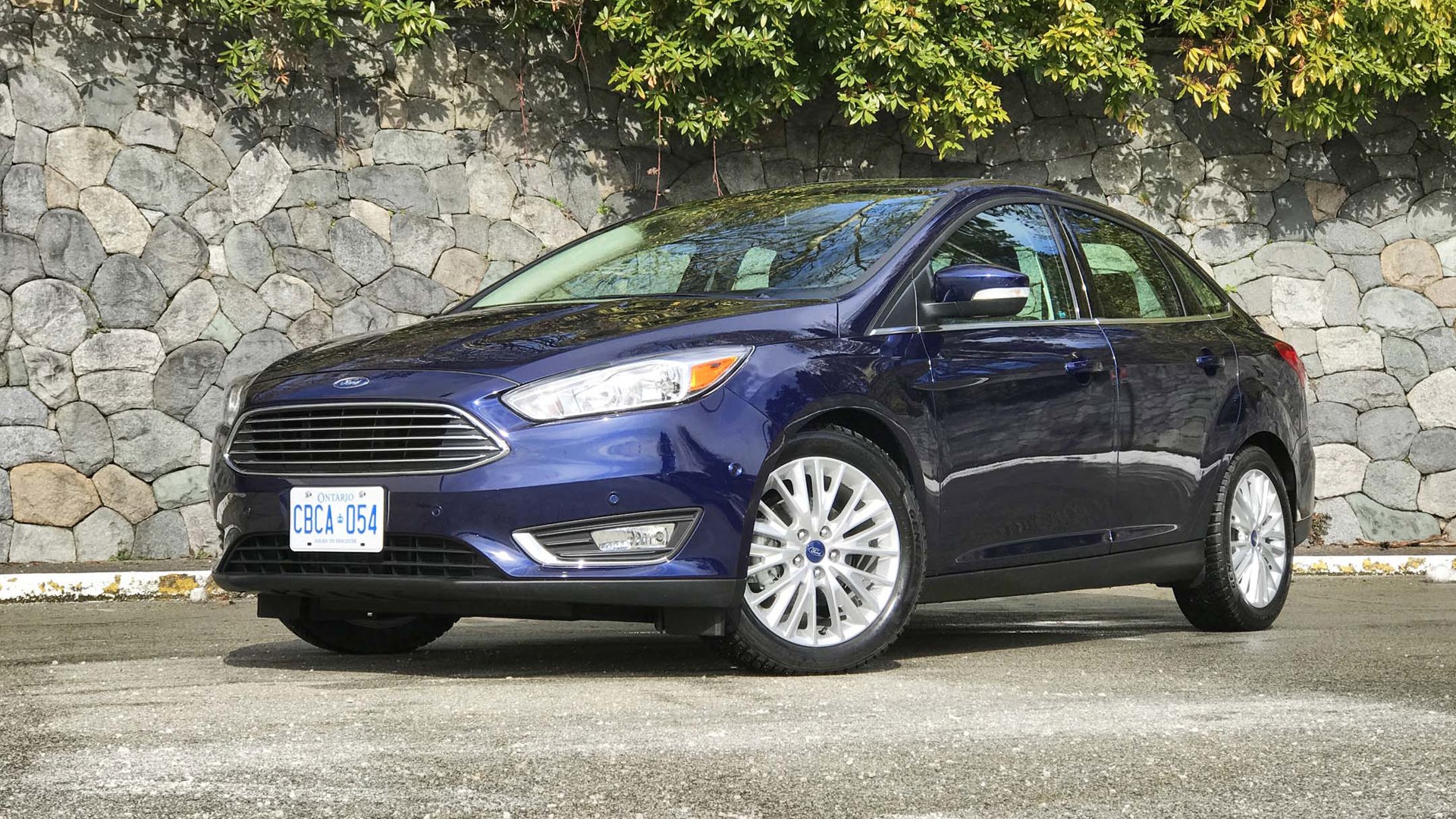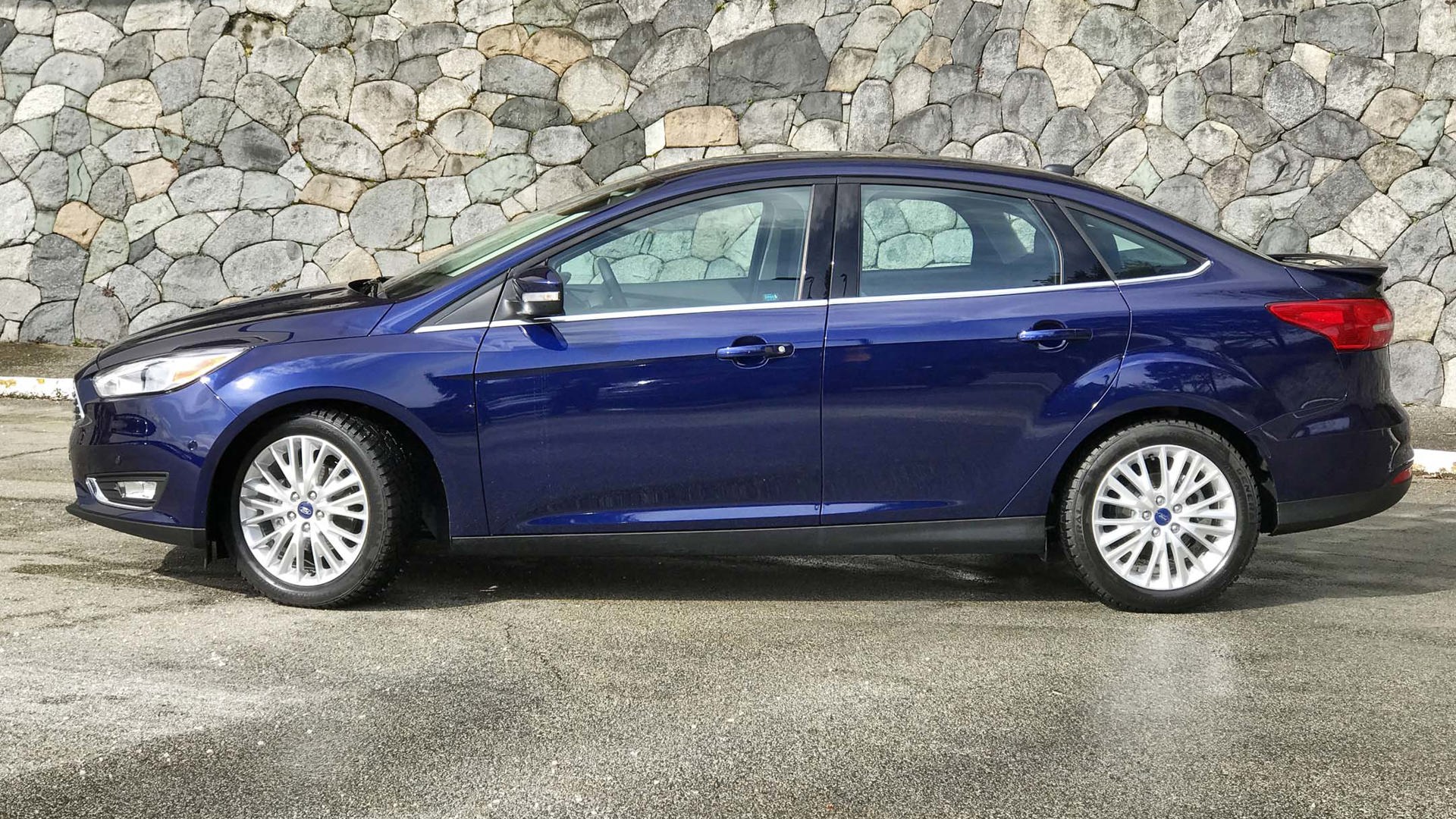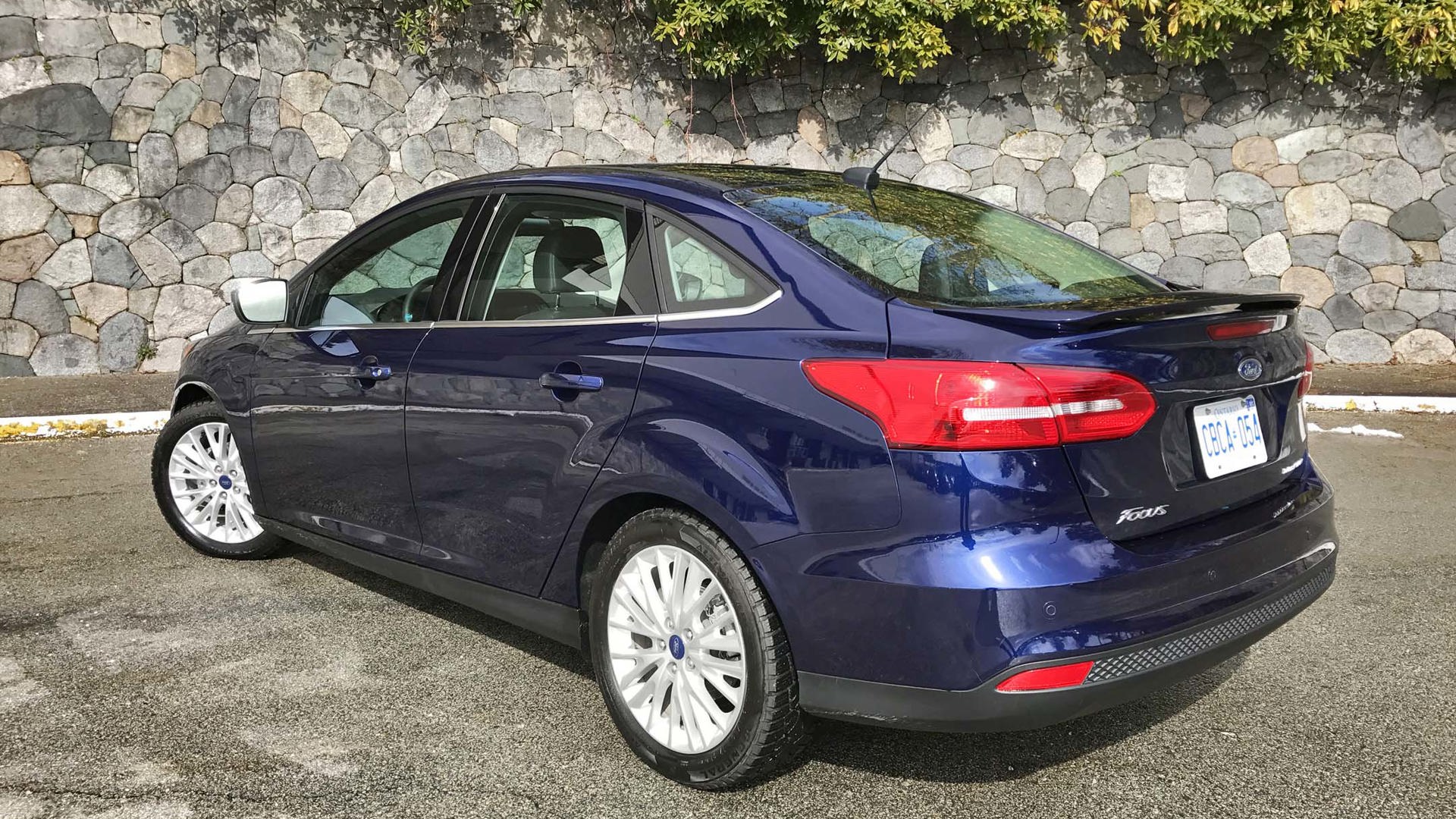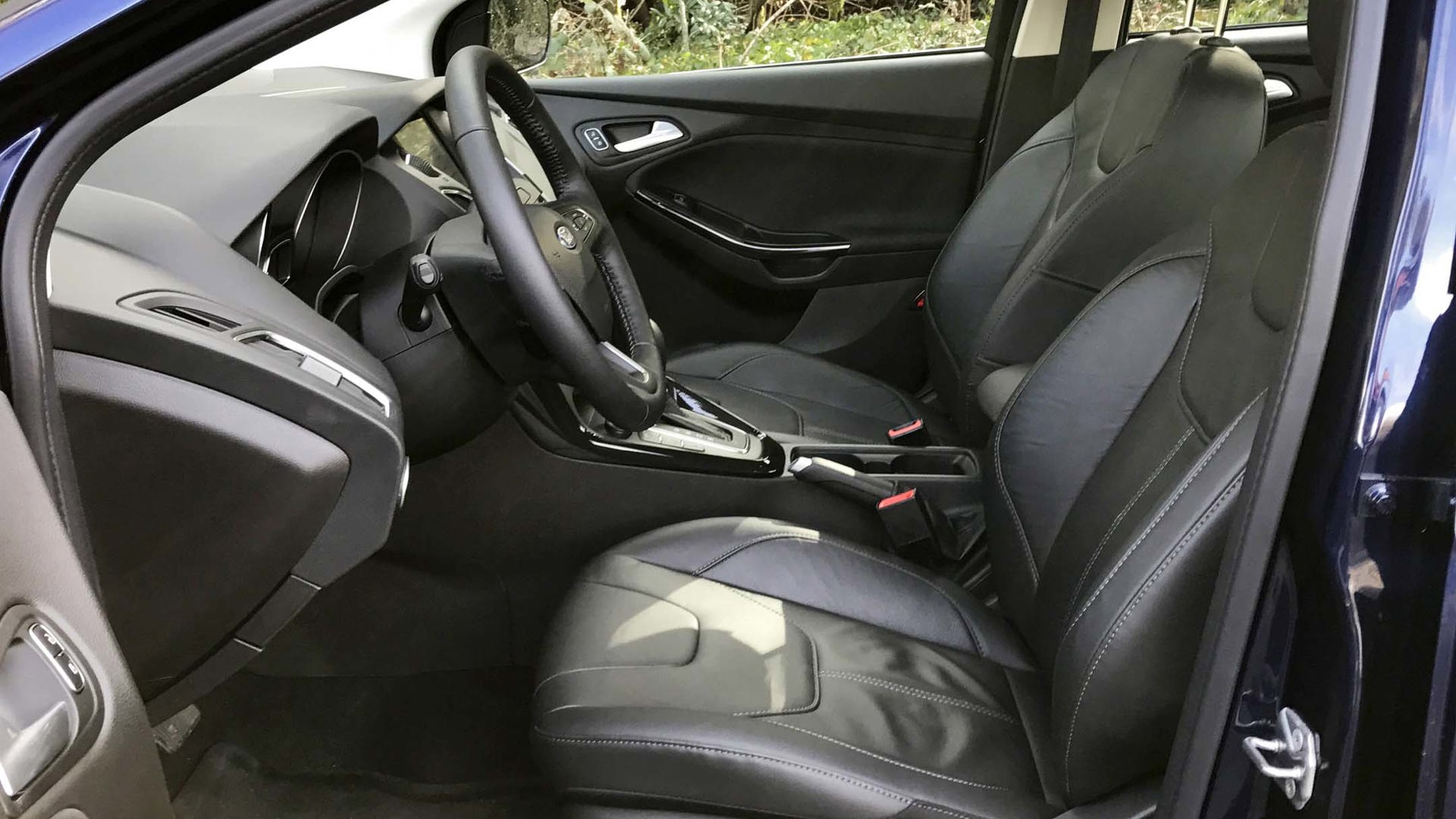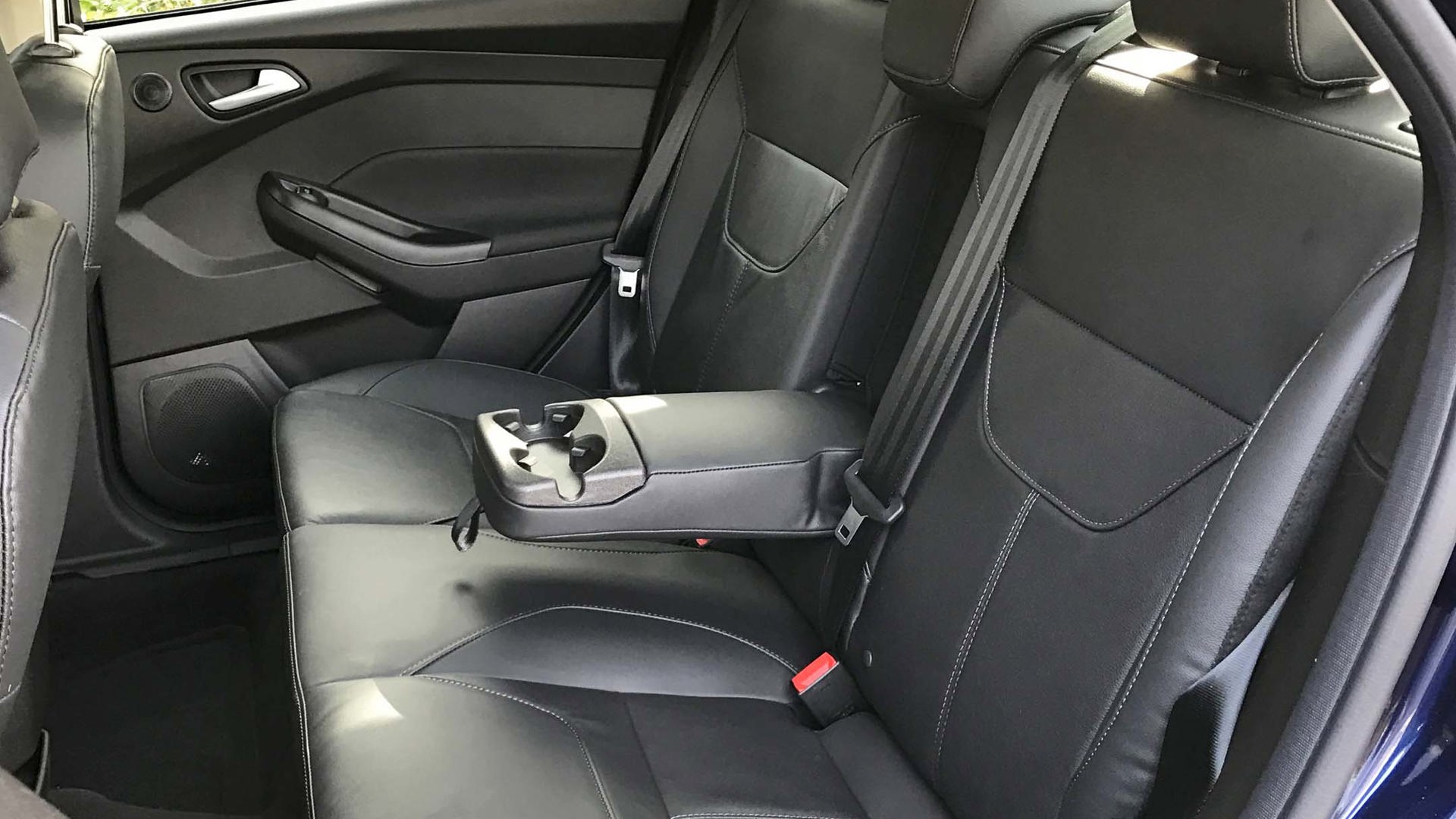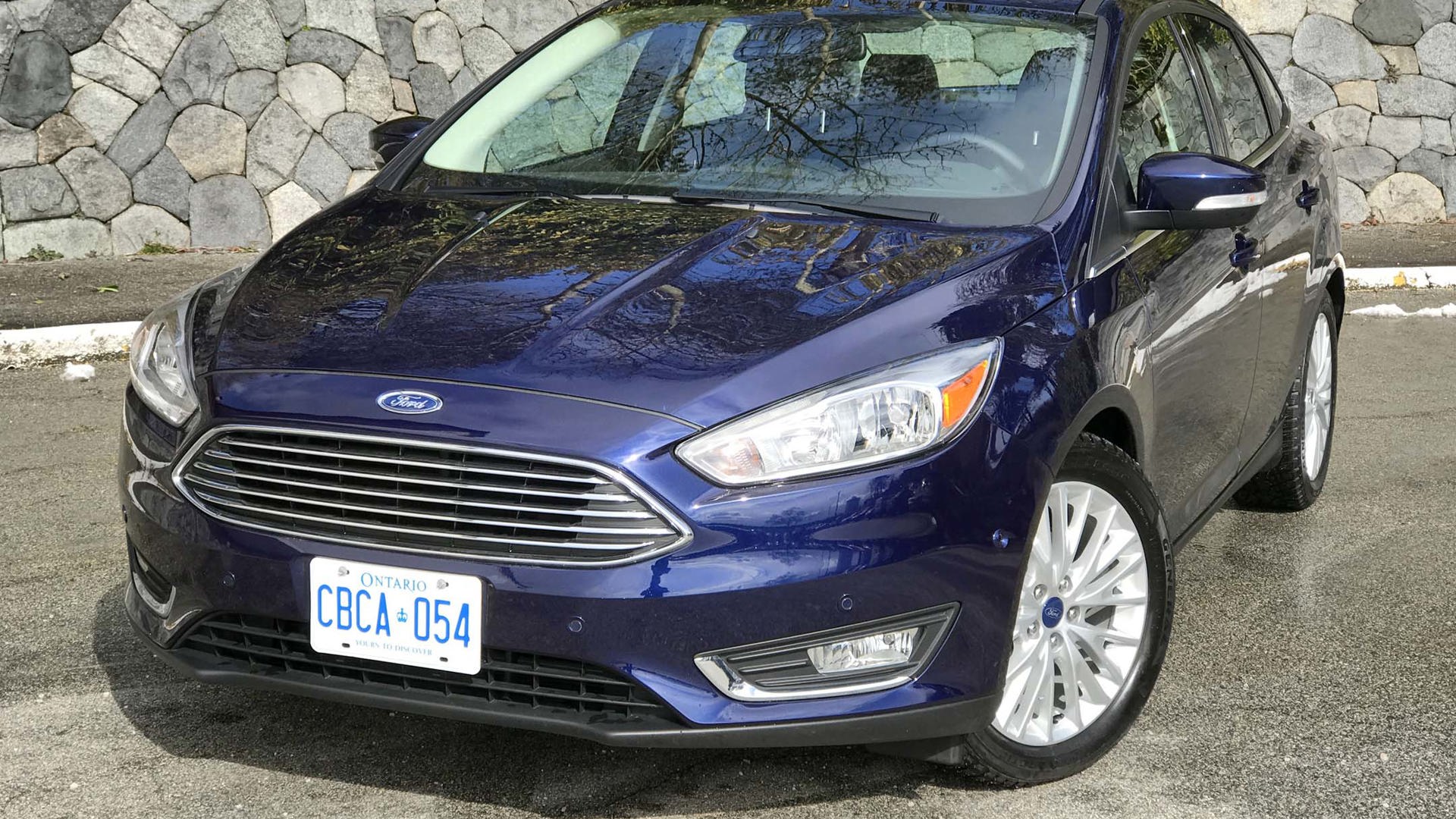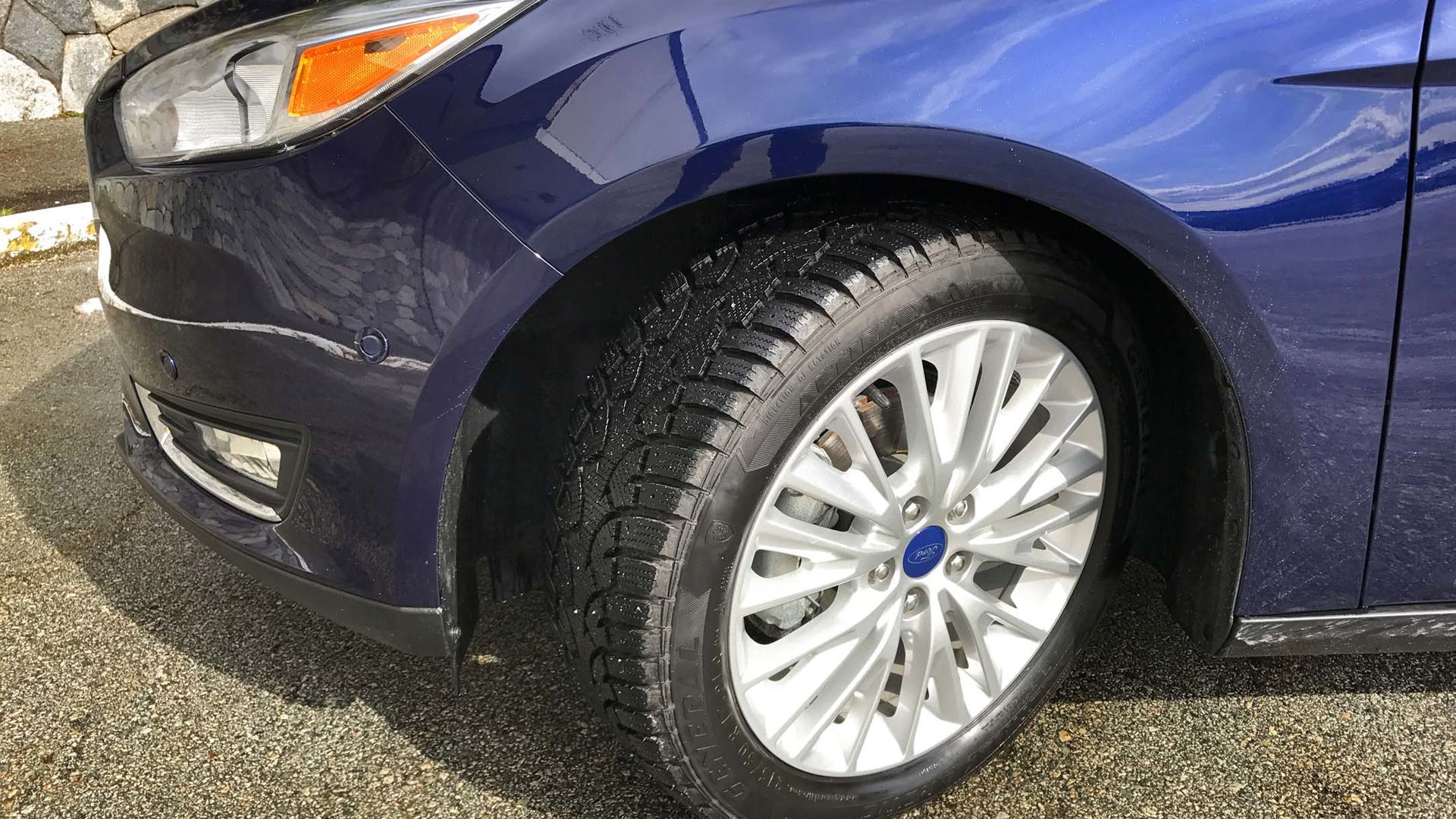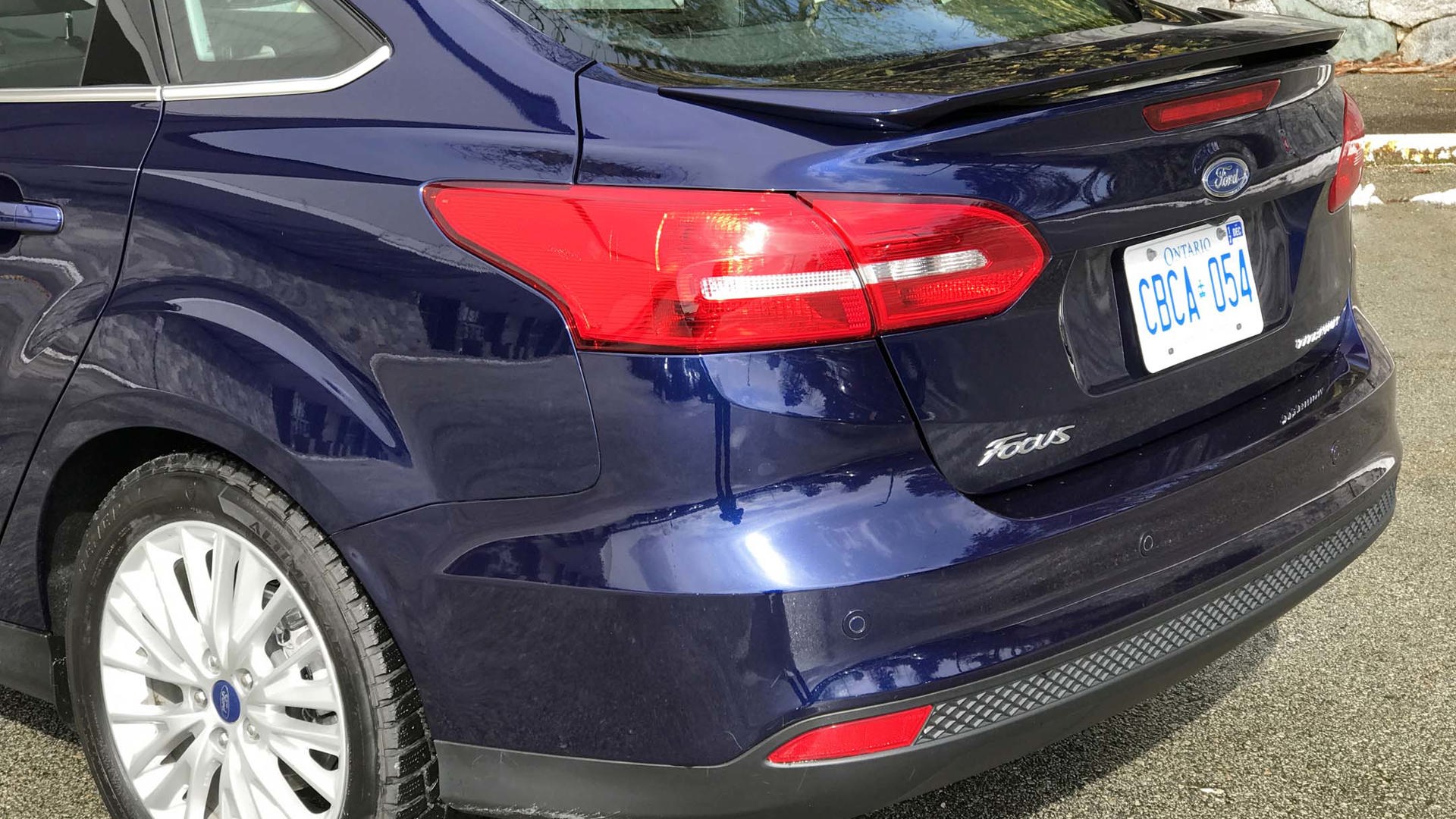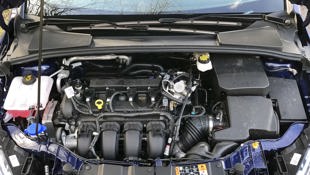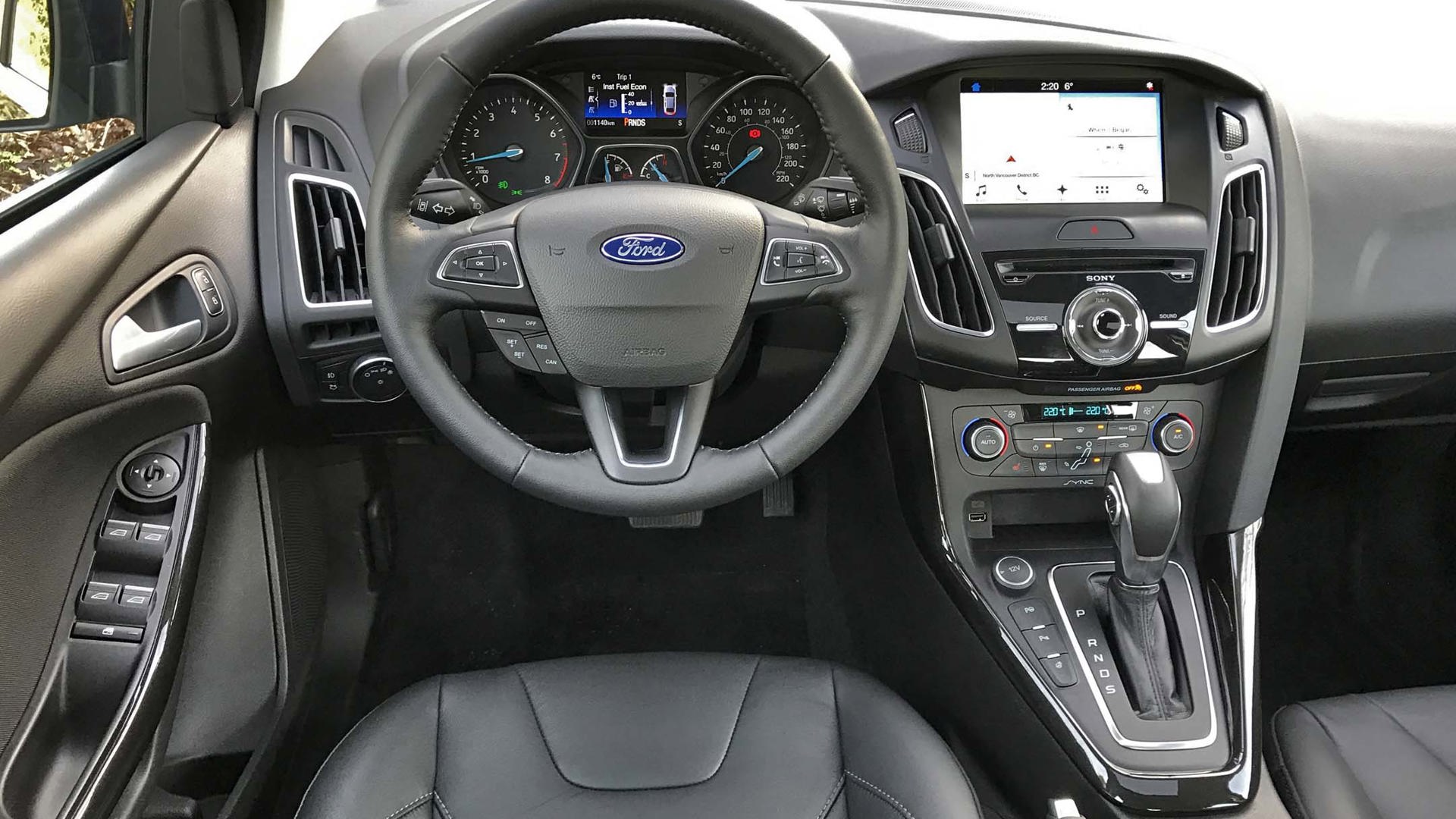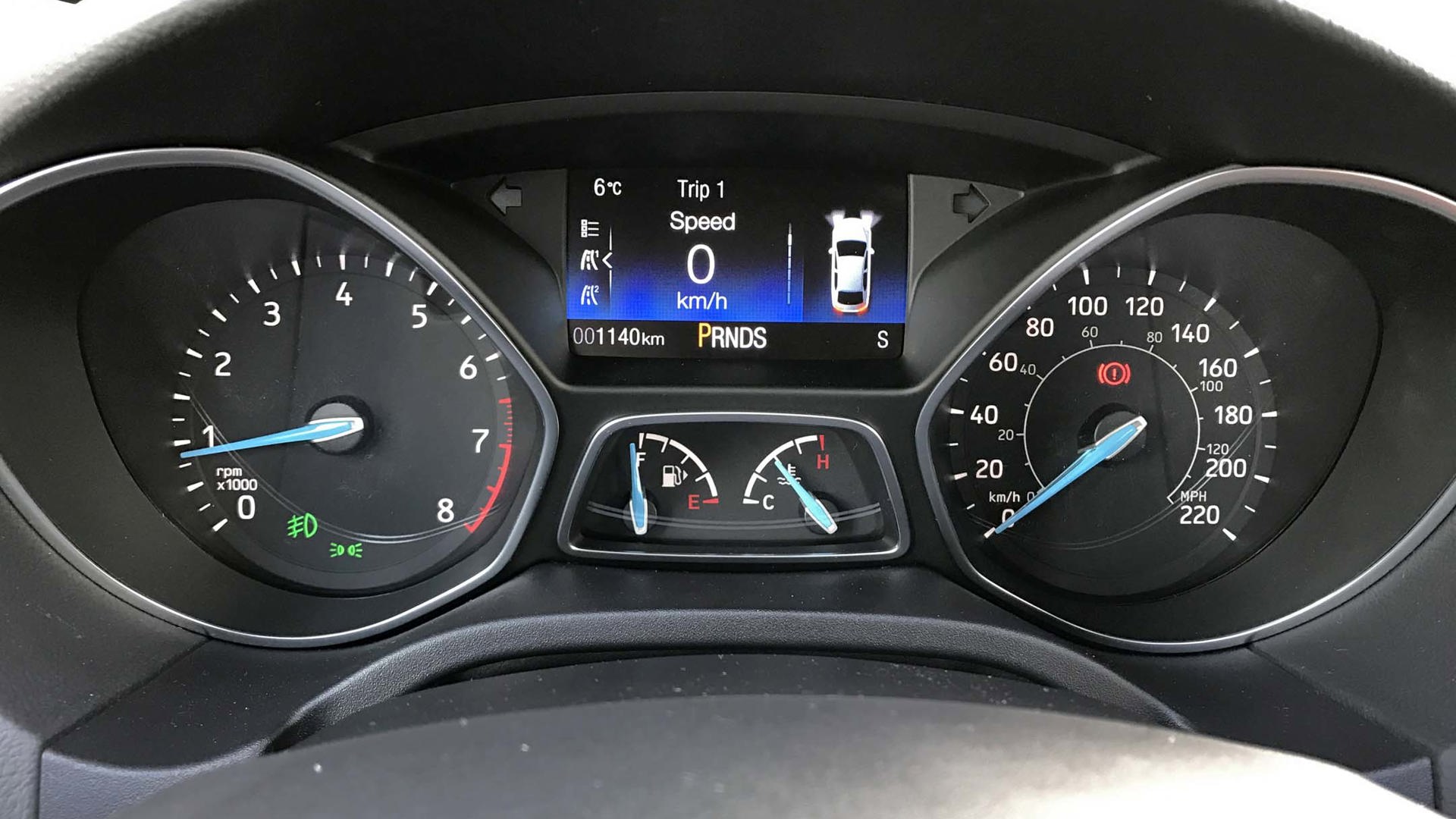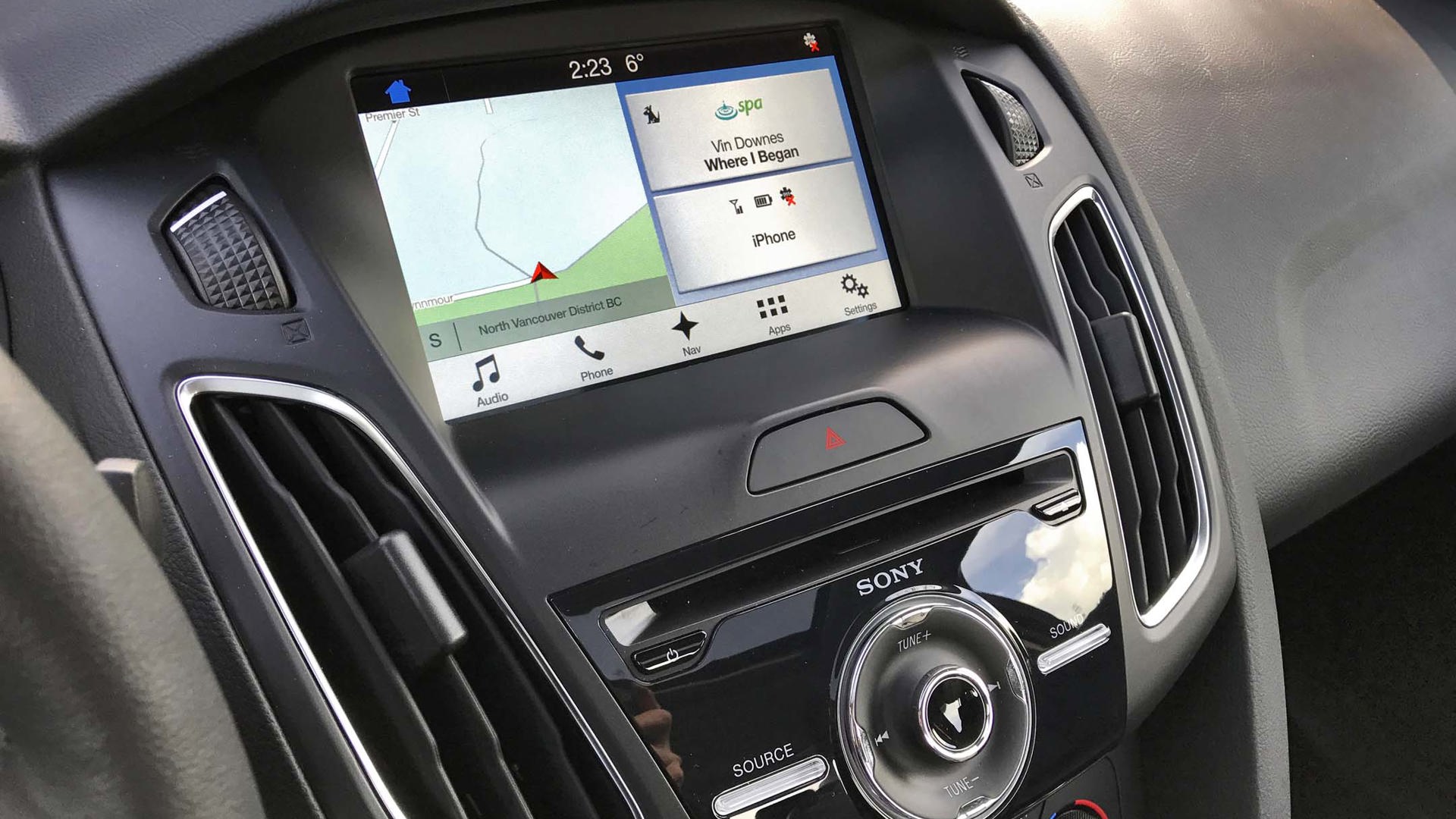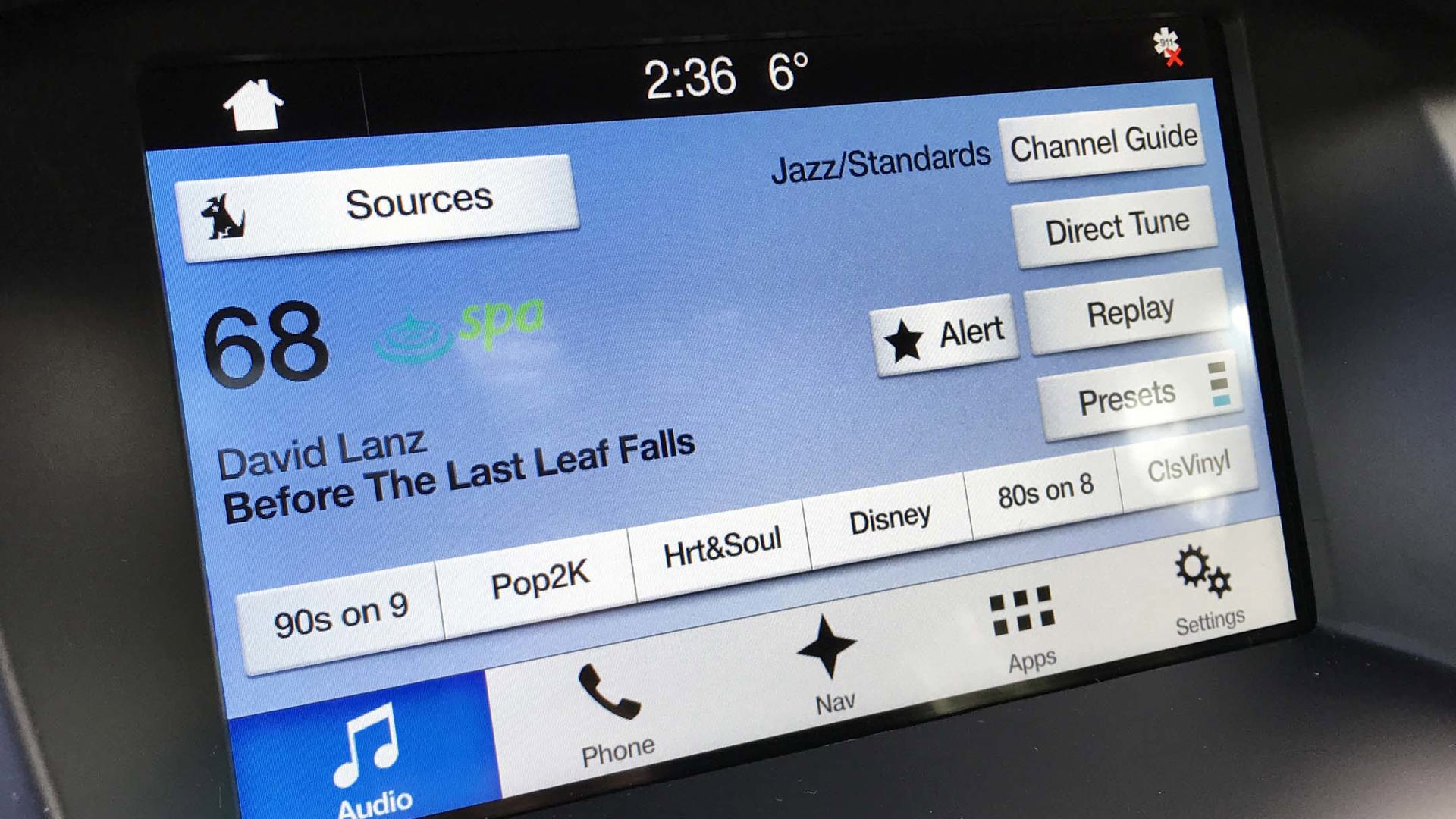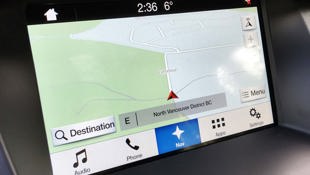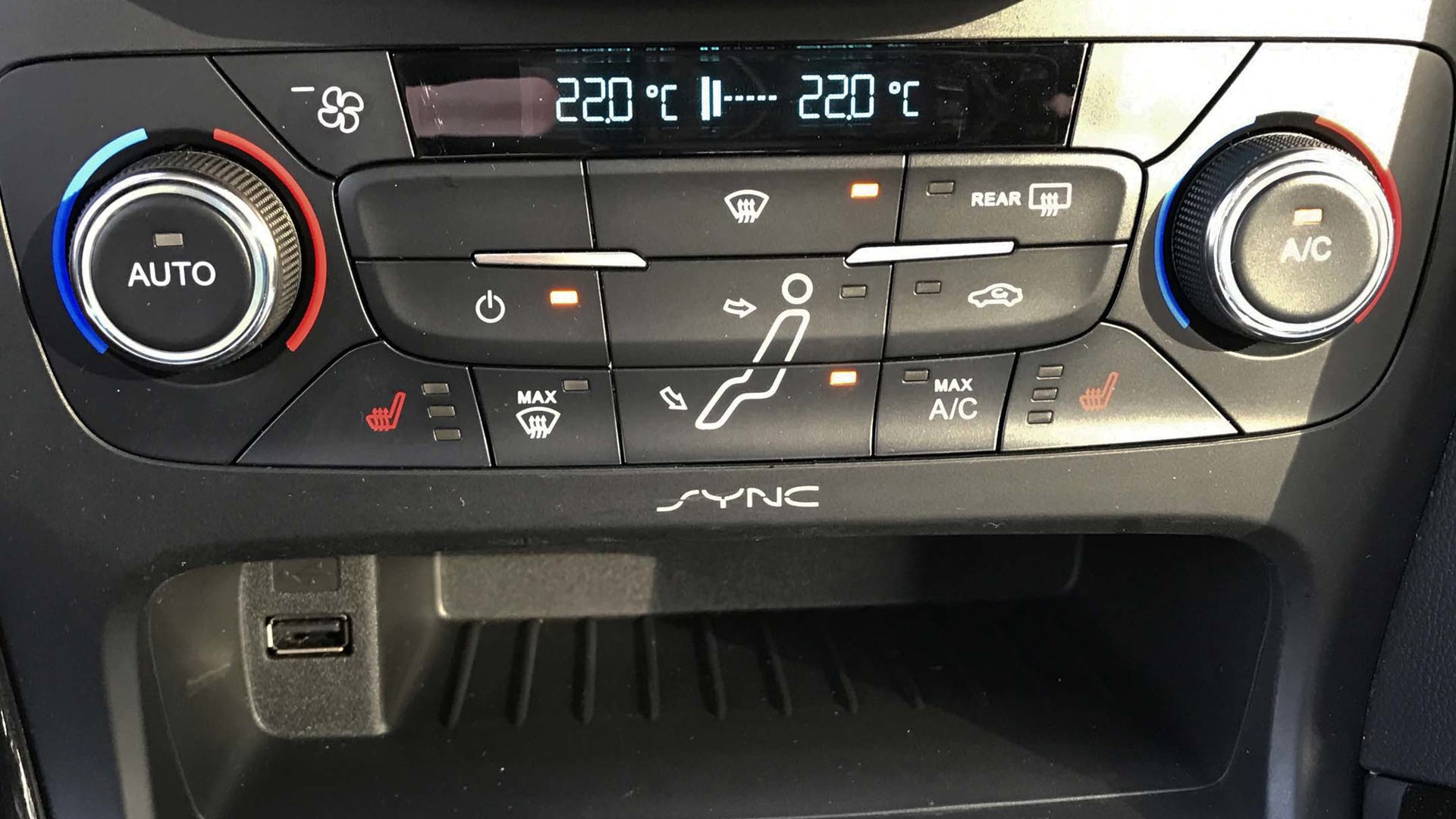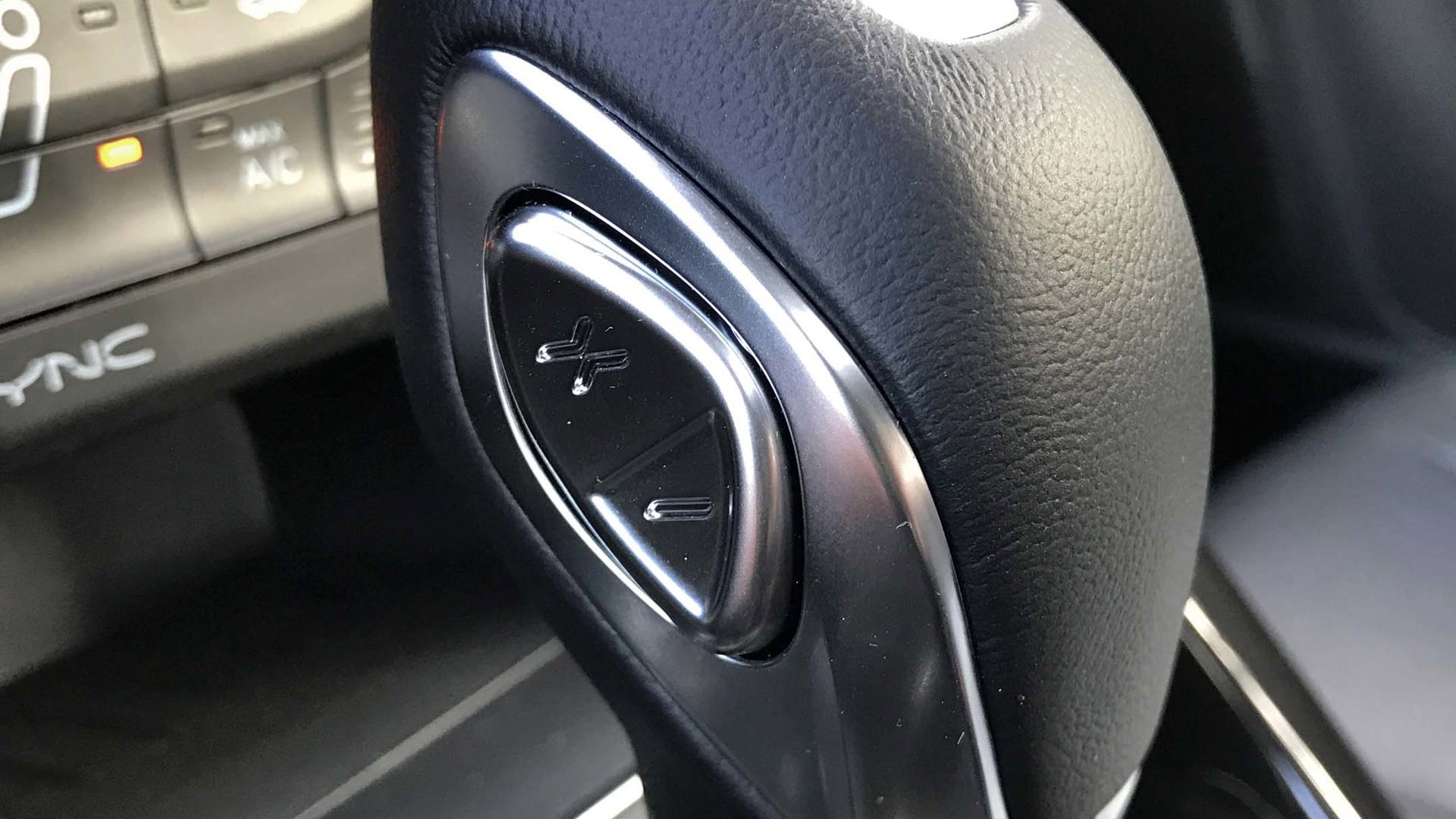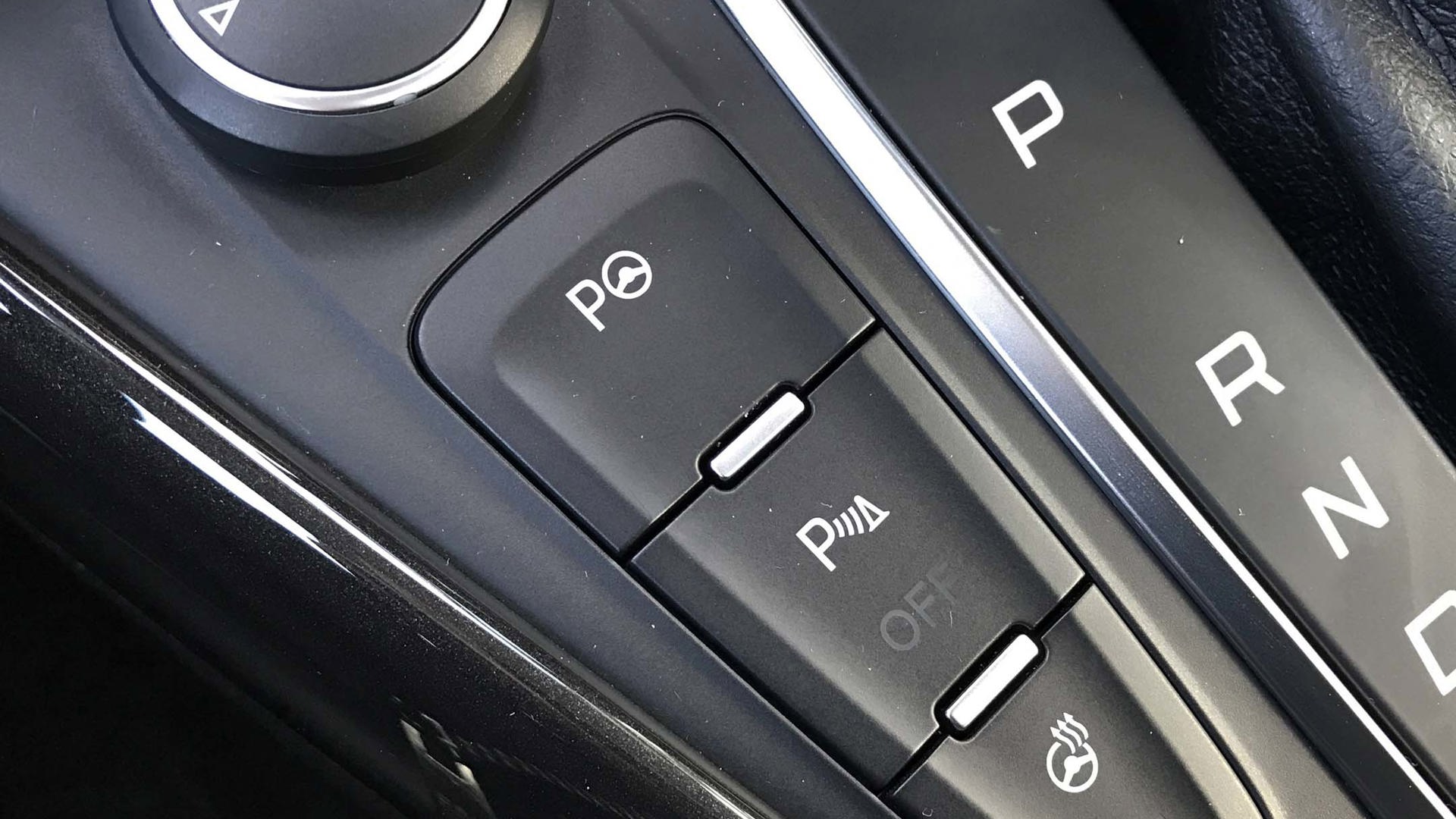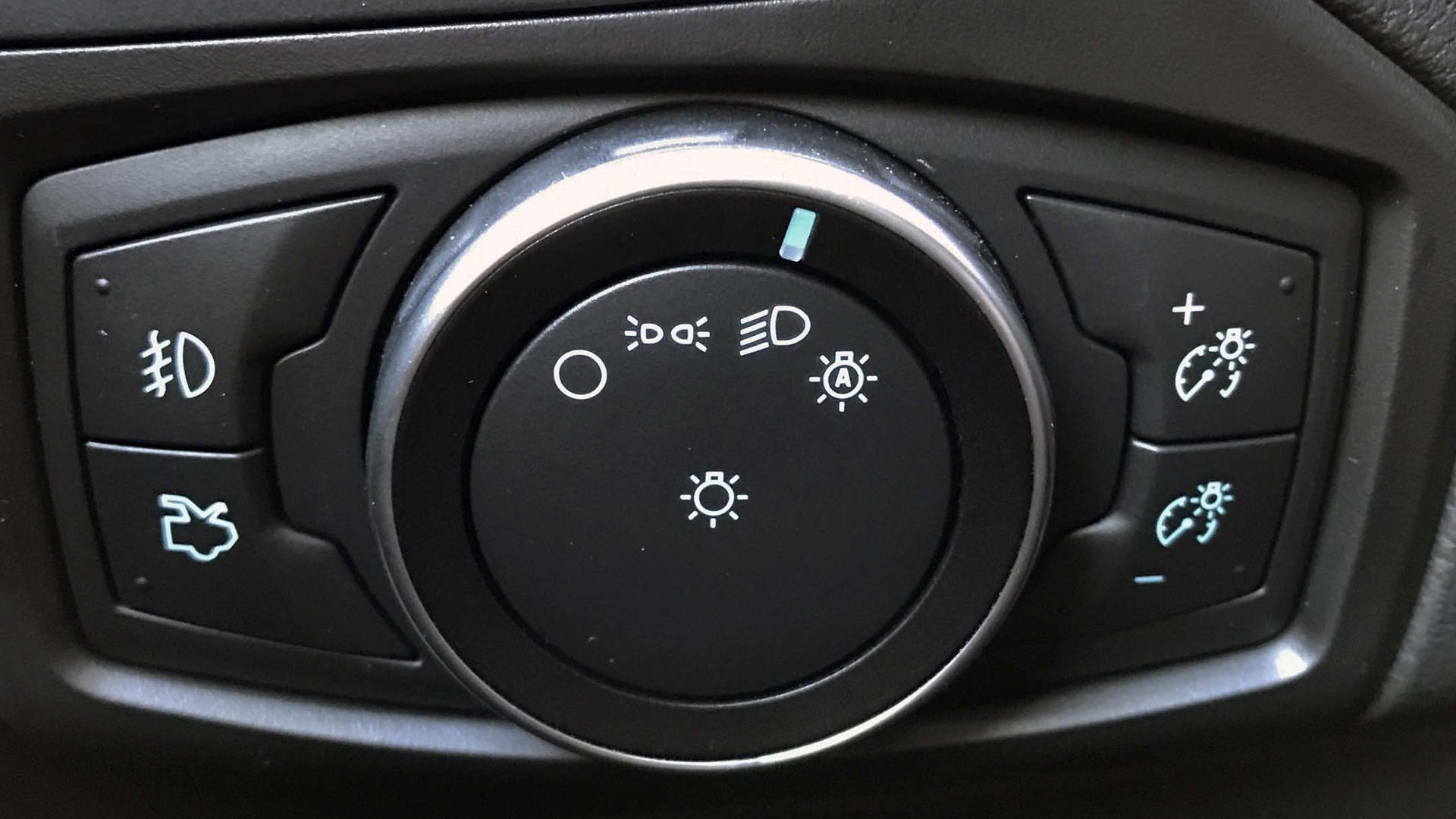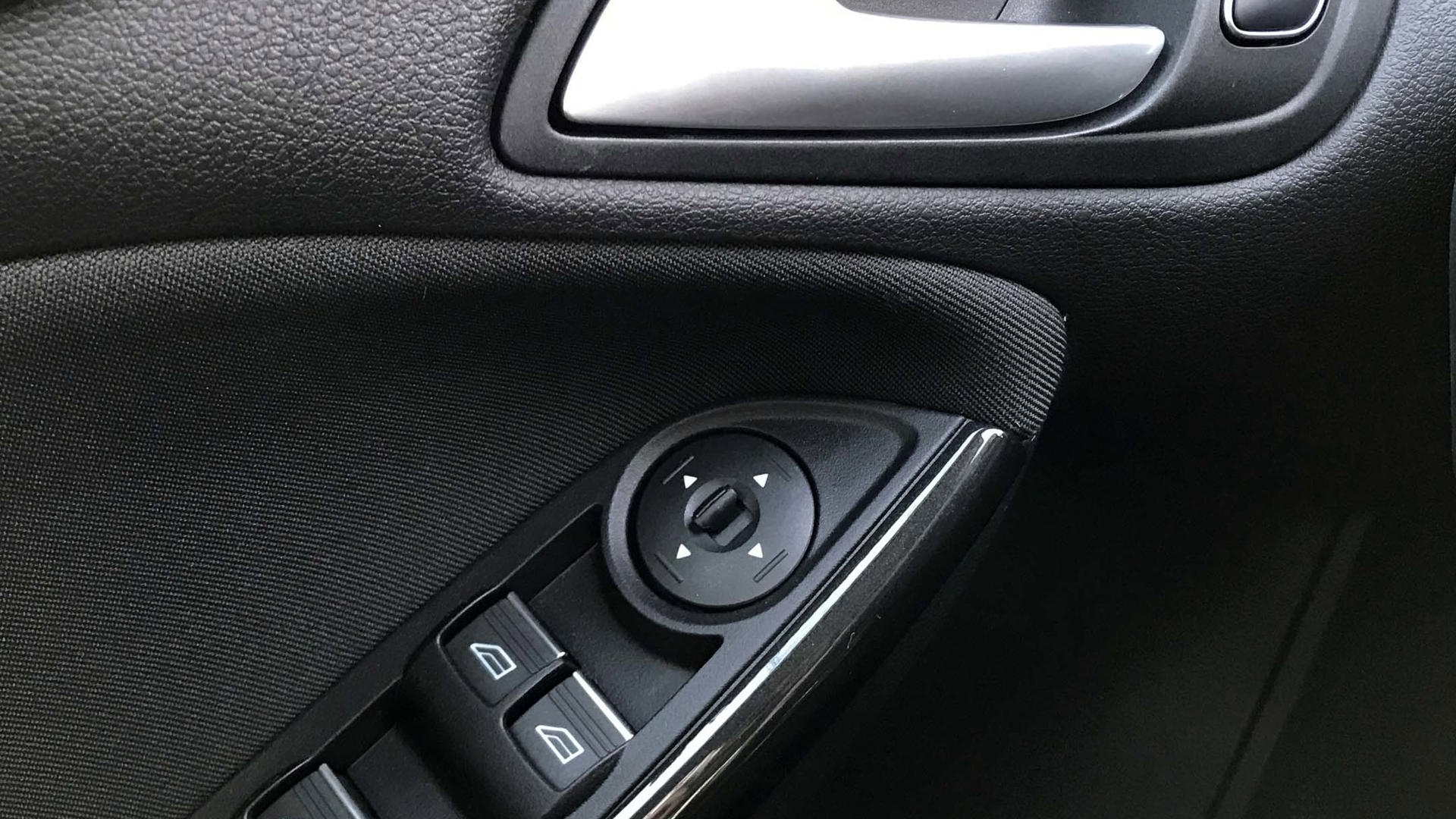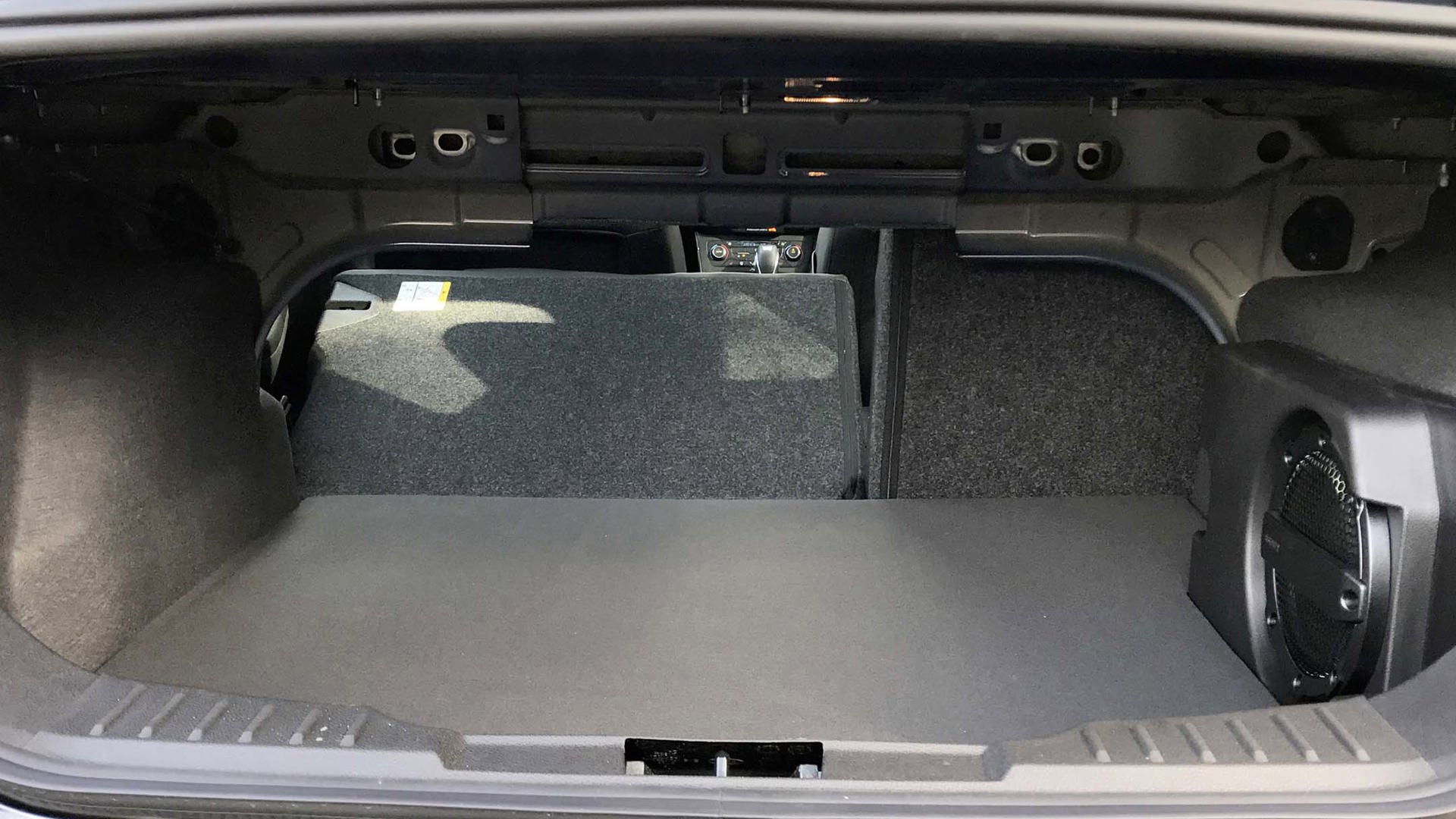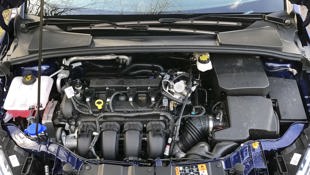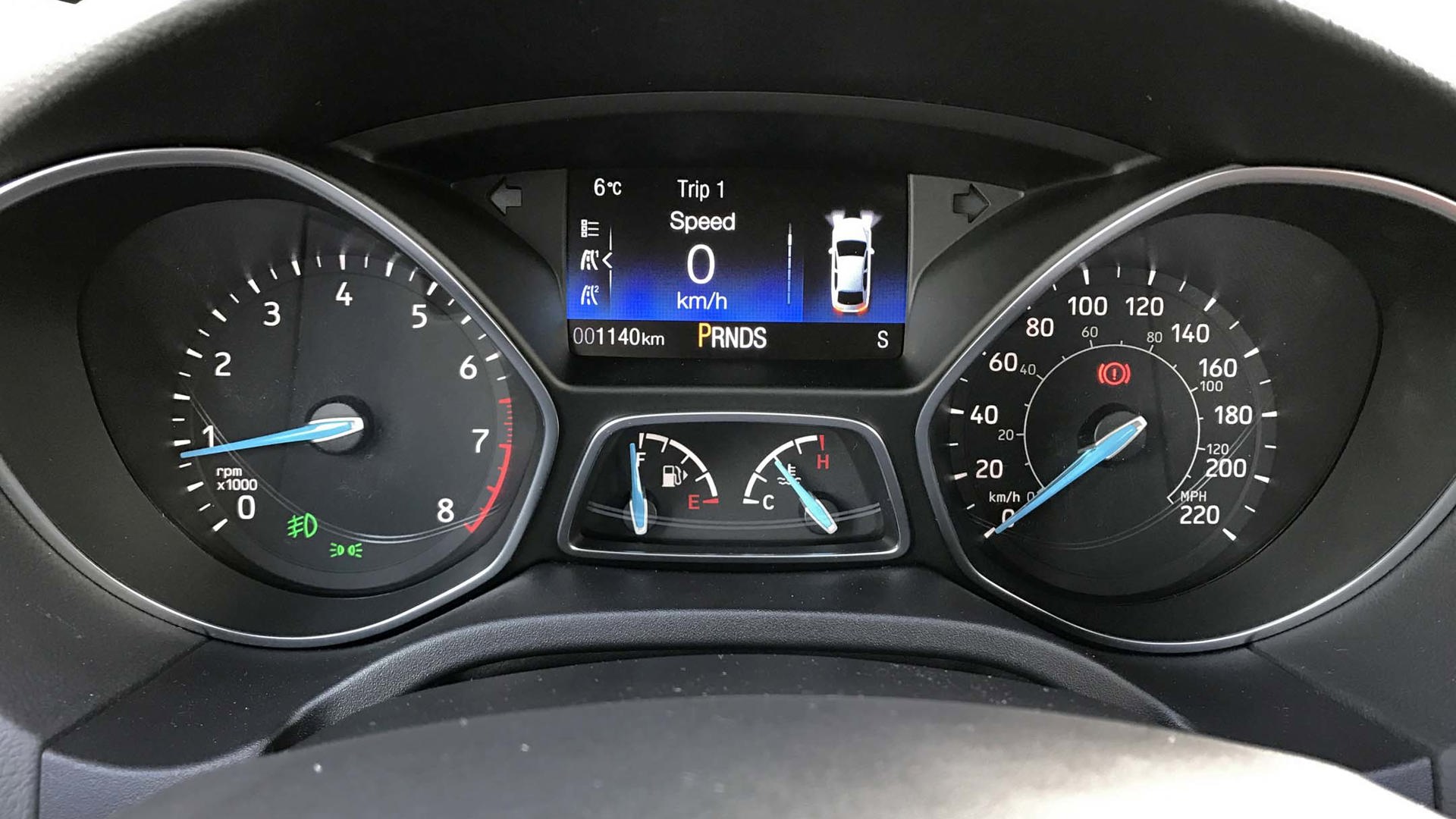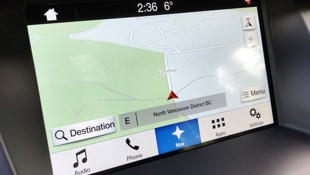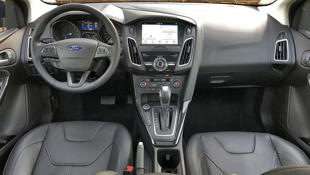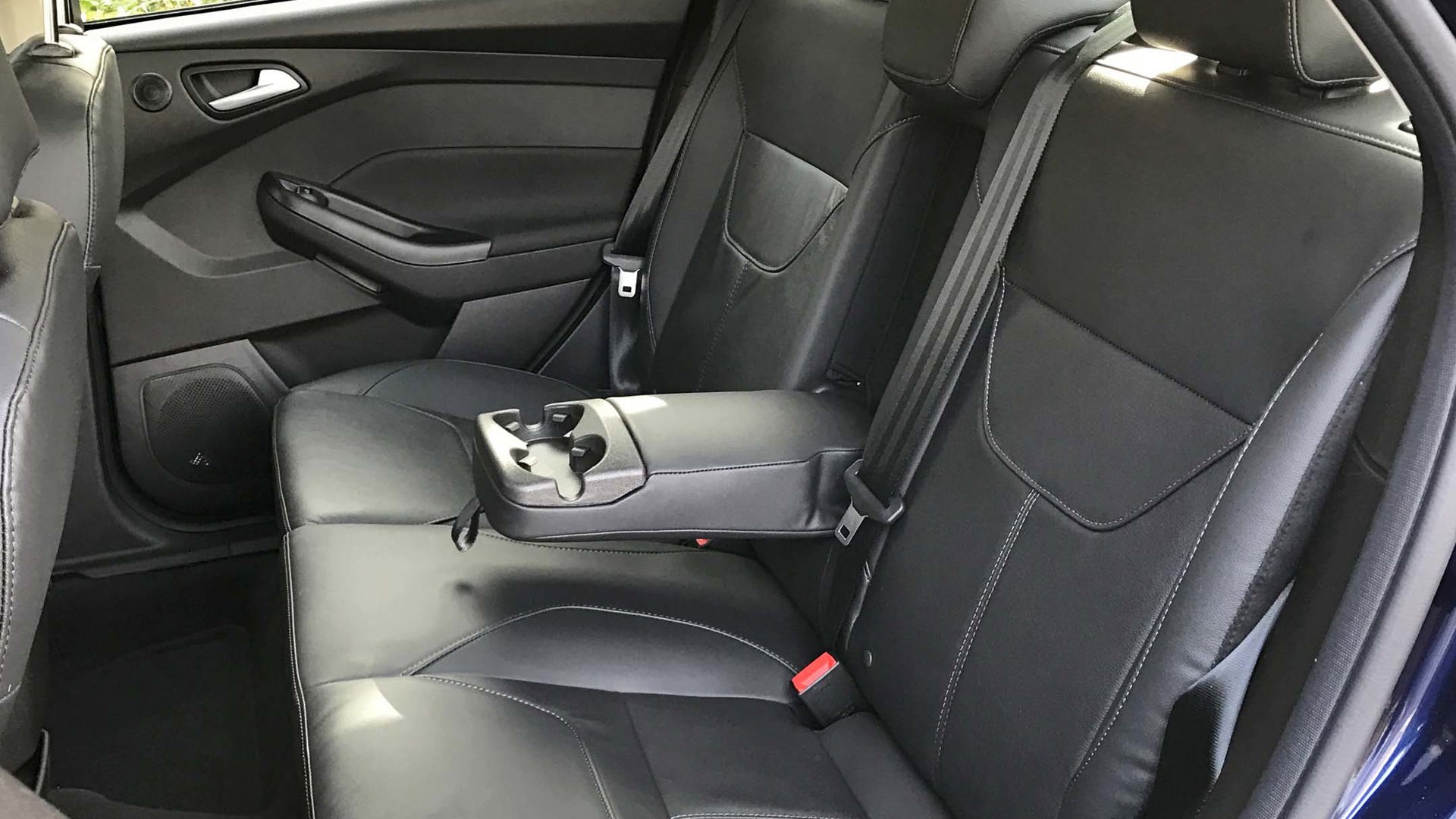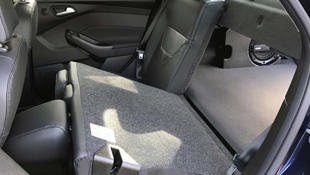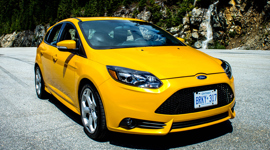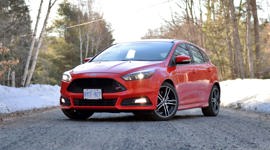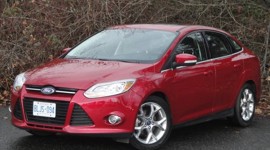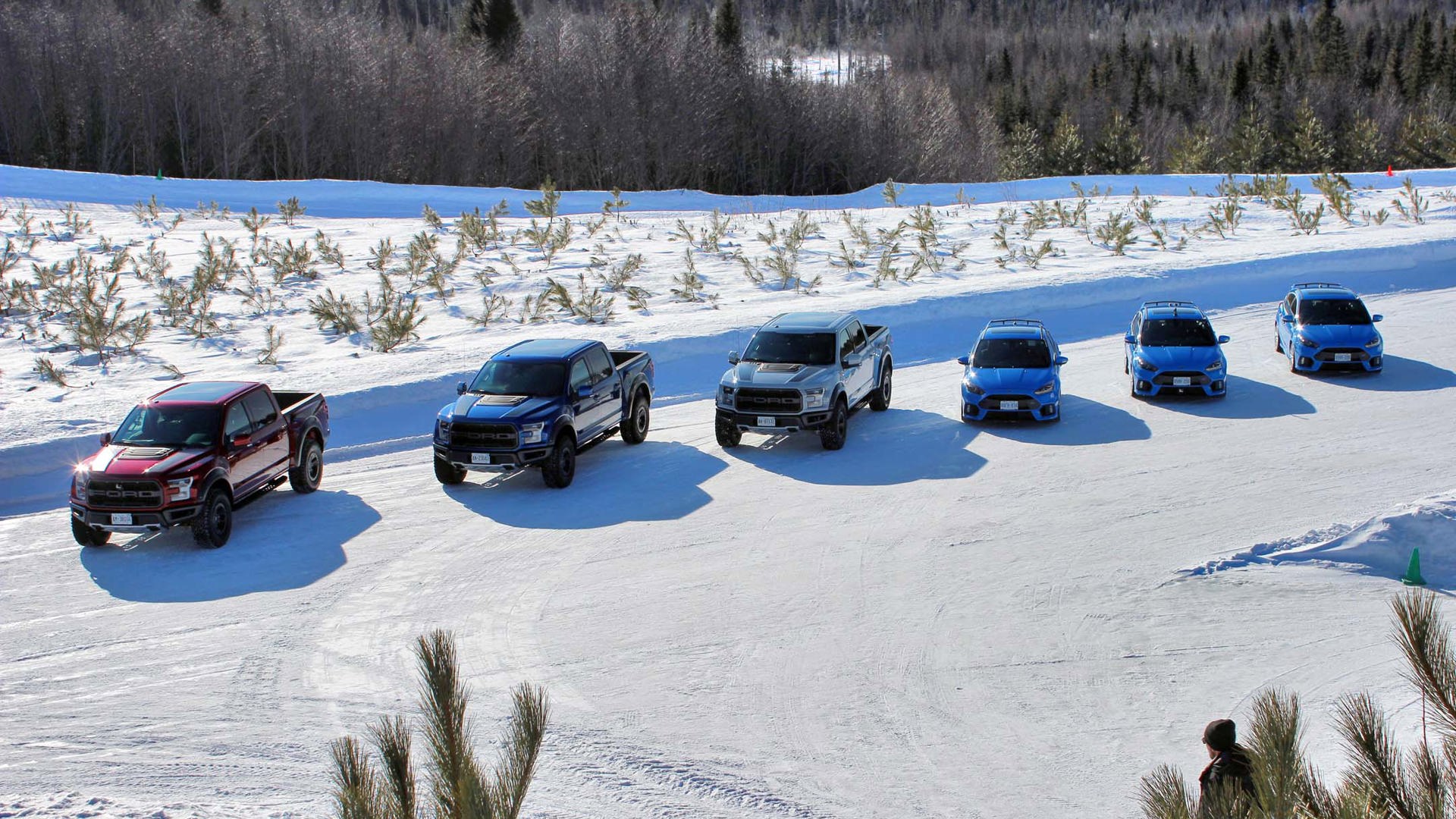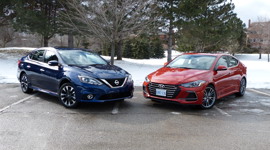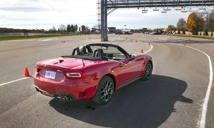 AutoTrader SCORE
AutoTrader SCORE
-
STYLING8/10
-
Safety7/10
-
PRACTICALITY6/10
-
USER-FRIENDLINESS5/10
-
FEATURES8/10
-
POWER7/10
-
COMFORT7/10
-
DRIVING FEEL8/10
-
FUEL ECONOMY7/10
-
VALUE7/10
It turns out that you don’t have to buy the racy 350 hp Focus RS or even the 252 hp Focus ST to have a bit of driving fun in a 2017 Ford Focus. A week’s seat-time in the 160 hp Ford Focus Titanium sedan equipped with the standard 2.0L four-cylinder engine and optional “Powershift” six-speed automatic dual-clutch transmission reminded us that Ford’s bread-and-butter compact car has the heart of a sports sedan. Its taut handling, quick steering, responsive engine and quick gear-shifts add driving enjoyment to even the simplest of daily commutes.
The Focus’ spunky 160 hp 2.0L DOHC four-cylinder engine with twin independent variable camshafts and direct fuel injection puts the power down in a hurry
There are more powerful compact sedans in its $16K–$30K price range, but the Focus’ spunky 160 hp 2.0L DOHC four-cylinder engine with twin independent variable camshafts and direct fuel injection puts the power down in a hurry from a standing start and continues to spin willingly to its 6,500 rpm redline without complaint. Its 0 to 100 km/h is in the 9.0 second range, not awesome, but good enough for a standard compact sedan.
At freeway speeds, the Focus offers a firm but comfortable ride and a surprisingly quiet cabin with minimal engine and tire noise. In sixth gear at 100 km/h, the engine turns over a relaxed 2,100 rpm. The Focus features active grille shutters to help reduce drag at higher speeds.
Equipped with the optional dual-clutch six-speed automatic with “SelectShift”, the transmission shifts quickly without being too jerky, our only criticism being a tendency to creep at idle speeds. You can increase the fun factor by moving the transmission shift lever from D to S (Sport mode) where transmission upshifts are delayed to keep revs higher for increased power and throttle responsiveness. Using the button on the left side of the shift knob, we tried shifting manually, but frankly it’s a poor substitute for shift paddles behind the steering wheel or a sequentially operated shift lever like you’ll find in most other cars.
With the standard 2.0L engine, the Focus’ fuel economy is okay, but not great. NRCan’s fuel consumption ratings for the Focus sedan six-speed automatic are 9.2 city/6.6 highway/8.0 combined. For comparison, a Chevrolet Cruze sedan with a 1.4L turbo engine and automatic transmission is rated 8.1/6.0/7.2 while the Honda Civic CVT sedan rates 7.8/6.0/7.0. After a week of mixed city and highway driving, my average fuel economy in the Focus sedan (according to the onboard fuel consumption display) was 8.7 L/100 km. The Focus uses regular unleaded gas and features Ford’s “capless” fuel door that eliminates the traditional screw-off fuel cap.
Focus buyers who want better fuel economy can opt for the SE trim level which comes standard with Ford’s turbocharged EcoBoost 1.0L three-cylinder engine with 123 hp and an automatic engine start/stop system which automatically turns off the engine when paused at traffic lights and restarts it when the brake pedal is released. Equipped with a six-speed automatic transmission, its NRCan rating is 8.5 city/6.2 highway/7.5 combined. By the way, the SE trim level can be had with the 2.0L engine at no extra cost.
Those who prefer to avoid gas stations altogether can opt for the Focus Electric Hatchback with its 170 kW (143 hp) electric motor and a 33.5 kWh lithium-ion battery that gives it a driving range of up to 185 km.
The Focus sedan’s nimble handling owes much to its fully independent suspension (front McPherson struts/rear control blade) and standard torque-vectoring control which automatically brakes the front inside wheel when cornering so that more power goes to the outside front wheel. We found handling to be nicely balanced with gentle understeer at the limit and a firm but not too stiff ride. Our Titanium model was equipped with General Altamax 215/50R17-inch winter tires which kept their grip on the road despite having to plough through sheets of water caused by heavy rainfall during our test week.
Enhancing the Focus sporty driving experience is quick, responsive electric power-assisted steering. We found it more communicative than in most compact sedans. One criticism: the Focus’ 11.0 m (36 ft) turning diameter is wider than we like in a compact sedan.
Front disc/rear drum brakes are standard in S and SE trims, but SEL, Titanium and Electric models have four-wheel discs. Anti-lock braking, traction control and electronic stability control are standard.
To help avoid potential collisions while driving, the Focus is available with an optional group of active safety features that warn the driver of cars travelling in the left or right blind spots, or of cars crossing behind when backing up. As well, if you inadvertently veer out of your lane at speeds above 64 km/h, a warning sound chimes and if no corrective steering is taken, the car will automatically steer back into its lane. Though we’re of the opinion that all drivers should be checking their blind spots, looking behind them when reversing and keeping their eyes on the road at all times, exceptions can happen; for that reason we’d recommend the optional Technology Package for the very reasonable price of $750.
If you want to activate some but not all of these safety warnings, it’s possible to choose which driver-assist features you want using the trip computer. For example, lane-keeping alert warnings can be activated and lane-keeping assist functions deactivated. You can also vary the intensity of the warnings by choosing High, Normal, or Low.
When parking the Focus sedan, the driver’s visibility to the front, rear and sides is very good – but like most sedans, the Focus has a tall rear trunk. Normally, this makes backing into a parking space difficult but the Focus is equipped with a standard back-up camera which displays a wide-angle view of the area behind the car. Useful white, red and green guidelines on the screen show where the car is headed and where to stop to avoid obstacles. As well, there is a top-down graphic of the car with flashing indicators that works in conjunction with the audible rear parking sensors to notify drivers when the Focus is approaching hard objects behind the car.
Our top-of-the-line Titanium test car also had front parking sensors that emit increasingly frequent warning tones as the car approaches a solid wall. In addition to avoiding parking lot scrapes, this enables you to park closer to a wall than you normally would, maximizing the use of available parking space. If these warning beeps become annoying, it is possible to turn them off using buttons on the centre console.
Our test car also had the optional Park Assist system which can automatically steer the car backwards into a parallel parking space. If you’re not good at parallel parking, this feature is well worth the $400 option price. It works like this: as you approach a potential street parking space, you press the Park Assist button on the lower console. External sensors detect if the parking spot is big enough for the Focus and if it is, a warning message in the dash instructs you to stop the car just ahead of the parking space and put the transmission into Reverse. You then take your hands off the steering wheel, and ease backwards into the parking space while the car steers itself. It takes a bit of courage to release your hands from the steering wheel and let the car steer itself, but after a few successful parking jobs, you realize that it actually works!
Our Titanium trimmed Focus came with keyless entry and push-button start. With the key in your pocket, locking the driver’s door is as simple as pressing a black button on the outside door handle and unlocking the driver’s door is as easy as gripping the door handle. Like many Ford and Lincoln cars, the Focus can also be locked/unlocked using a numerical code on the driver’s door. Once in the driver’s seat, the Focus can be started with the push of a button. The key remains in your pocket or purse all the time.
The Focus’ interior is mostly black in colour with some aluminum trim around the gear lever, air vents and controls and some glossy charcoal-coloured plastic trim on the dashboard, centre console and doors. Our top Titanium model came with heated leather seats and a heated, leather-wrapped tilt/telescopic steering wheel. The front seats are well padded and comfortable on longer drives but while the driver enjoys power rake, height and lumbar adjustments the front passenger has basic manual adjustments for rake and fore-aft – even in the top-of-the-line Titanium trim.
The cabin is a little smaller than other cars in its class, notably when it comes to rear seat legroom – but it’s not cramped. Sitting in the back seat “behind myself”, I had sufficient foot room, knee room and headroom. The rear seat cushions are firmer and less comfortable than the front seats but the rear sides of the front seatbacks are sculpted out to increase knee room for rear passengers.
I didn’t like the Focus’ protruding dashboard design. While it makes it easier to reach the touchscreen and other controls, the protruding dash seems to make the cabin feel more crowded. As well, the centrally located radio volume dial and Seek/Tune buttons seem designed for more for looks than practicality. I also disliked the heater’s small push-button fan-speed controls. These may be small things, but many of the Focus’ competitors offer much simpler, more user-friendly audio and heater controls.
Instrumentation is comprehensive. Twin gauges in the instrument cluster have large white-on-black numerals with blue pointers while smaller gauges for fuel and oil are tucked into the bottom of the cluster. Between the big gauges is an illuminated information display with bright white numerals and a blue background. Here you can find transmission gear selection, odometer, compass, outside temperature, digital speedometer, average and instant fuel economy, distance to empty, visual graphic of parking sensor warnings, driver-assist settings and trip computer settings. Scroll through them using the four arrow buttons on the left steering wheel spoke.
The large 8-inch touchscreen in the centre of the dash is home to Ford’s recently updated Sync 3 infotainment system. In general, I found that Sync 3 is easier to read and operate than Ford’s first Sync system. Sync 3 has better finger touch sensitivity, swipe and pinch capability, larger graphics and “tiles”, colours that are easier on the eyes, and quicker screen transitions. It’s also quicker to respond to voice commands for phone, audio or navigation commands. The Home screen includes a navigation map, audio info, and phone info while the bottom of the screen contains a menu bar for audio, phone, navigation, apps and settings.
Storage space is limited in the Focus. Apart from a glovebox and door pockets, there’s a small bin underneath the padded centre armrest with USB and 12-volt power outlets, and there’s an open slot at the bottom of the centre stack near a USB and 12-volt outlet. The two cup holders between the front seats include removable height adjusters for small or large cups and spring-loaded cup holders. At the rear is a small bin and a folding centre armrest with two cup holders.
Though the Focus sedan is not as practical as the Focus hatchback, its standard split rear seatbacks offer the flexibility of carrying longer items in the trunk at the same time as one or two rear passengers. However, the rear seatbacks don’t fold down completely flat.
The Focus sedan’s 373 L trunk is deep and fully lined, but the trunk opening is quite narrow (from top to bottom): extra-large travel cases may not fit through the opening. Another small beef: there is no inside handle to close the trunk lid. A temporary spare tire resides under the trunk floor.
Overall, we think the 2017 Ford Focus sedan scores high in driving enjoyment, infotainment features, and advanced safety features but we’d give it a so-so rating for fuel economy, practicality, interior design and price.
In Canada, 2017 Ford Focus sedans come in four trim levels: S ($16,898), SE ($19,598), SEL ($23,588), Titanium ($26,408).
The 2017 Ford Focus sedan is built in Wayne, Michigan.
| Engine Displacement | 2.0L |
|---|---|
| Engine Cylinders | 4 |
| Peak Horsepower | 160 hp |
| Peak Torque | 146 lb-ft |
| Fuel Economy | 9.2/6.6/8.0 L/100 km cty/hwy/cmb |
| Cargo Space | 373.8 L |
| Model Tested | 2017 Ford Focus Titanium Sedan |
| Base Price | $26,708 |
| A/C Tax | $100 |
| Destination Fee | $1,650 |
| Price as Tested | $30,508 |
|
Optional Equipment
$2,050 – Technology Package (BLIS, Cross-traffic Alert and Lane Keeping Alert) $750; Active Park Assist $400; Sony audio and voice-activated navigation $800; engine block heater $100
|
|
